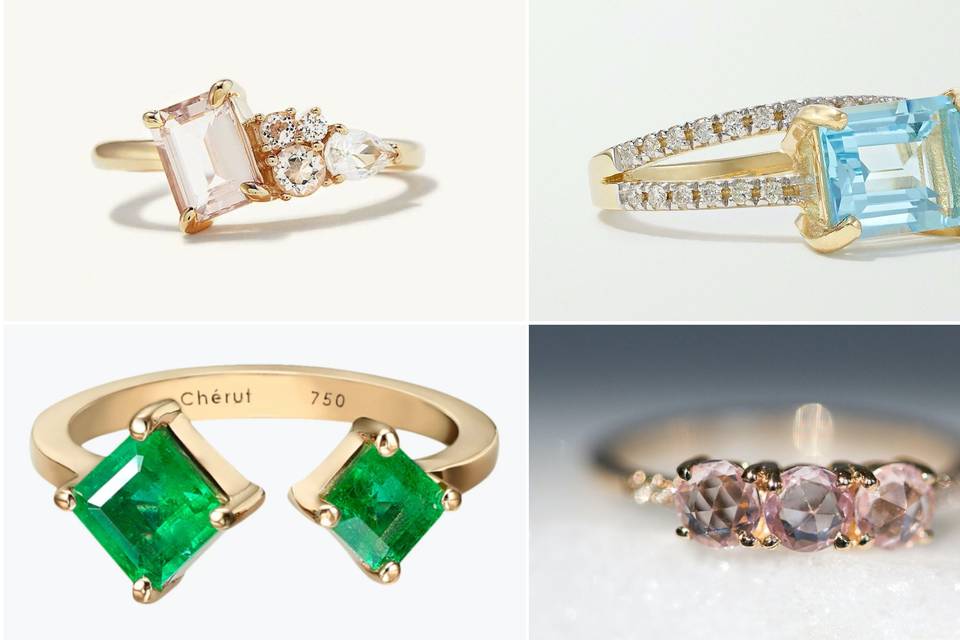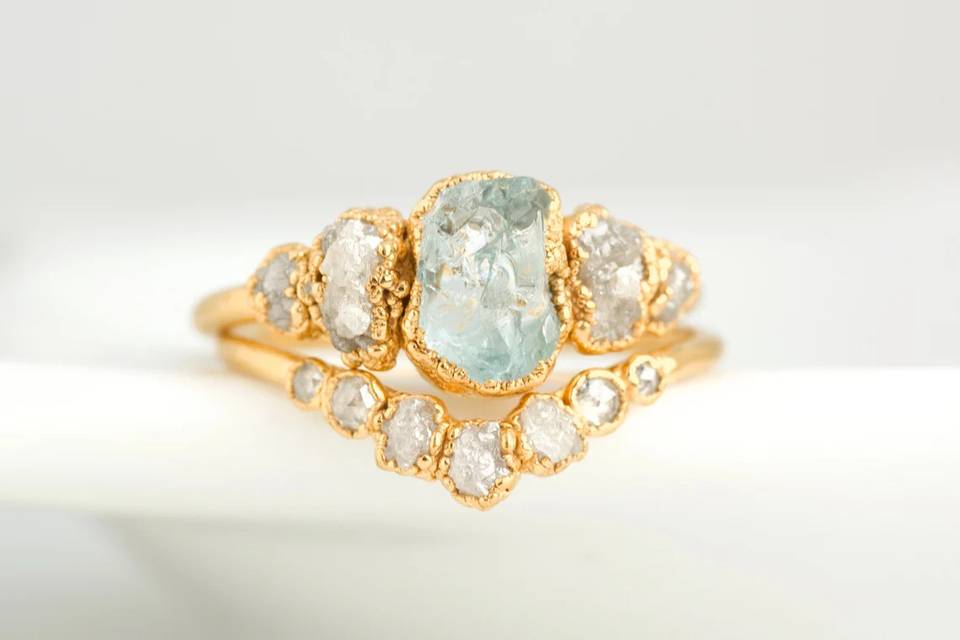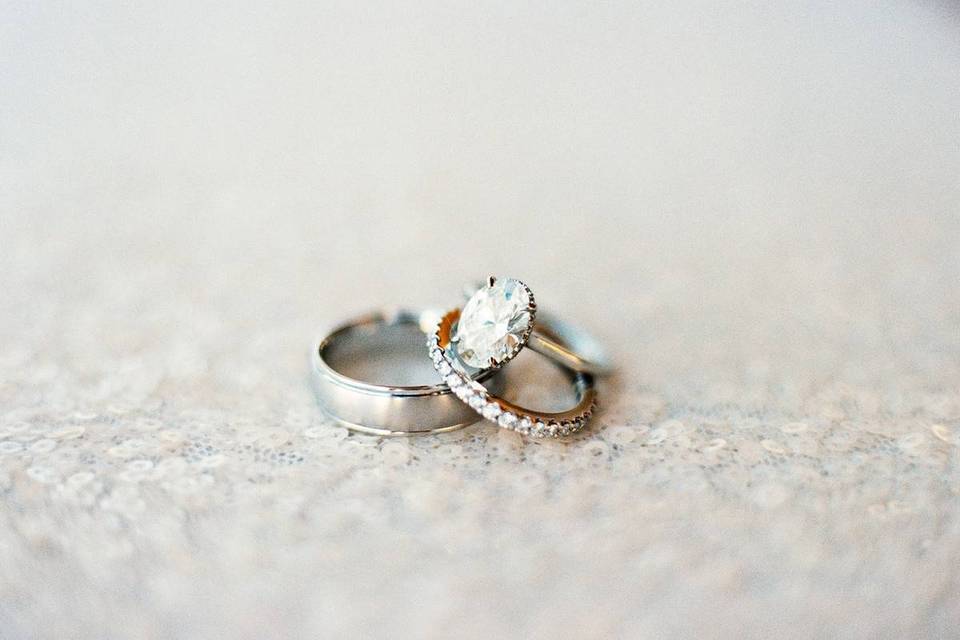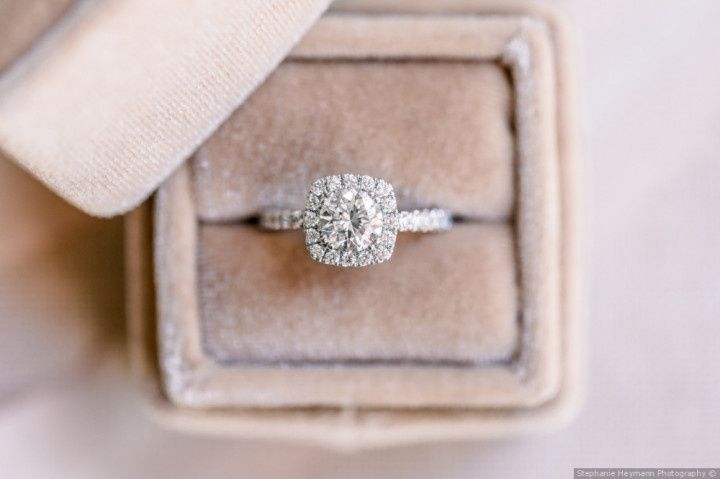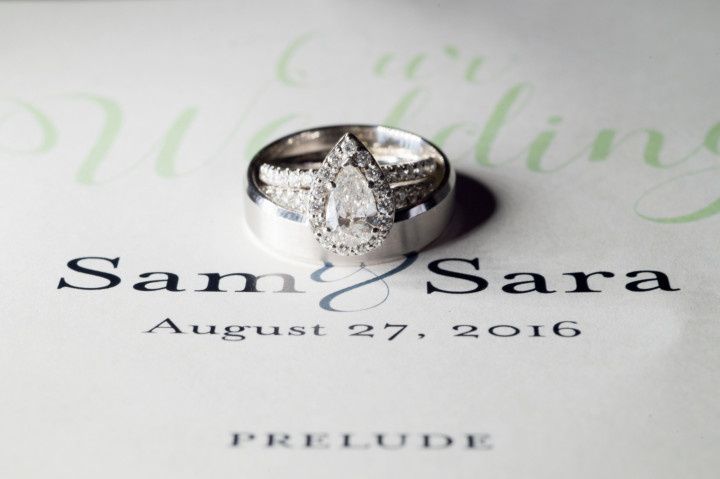The History of the Ring Finger—and Where to Wear Your Engagement Ring
Is it true that wedding rings are only worn on the left hand? We've got answers right here.

It's common knowledge that engagement rings and wedding bands are standard practice when it comes to getting married. But there's one thing that you might not have considered before: What hand does the engagement ring go on? Unless you've done the research ahead of time, there's a good chance you'll be left feeling confused in the moment when it's time to put on your own diamond ring or wedding band—but that's what we're here for. To sum it up? The engagement ring finger debate is actually more complicated than you think, and it involves a decent amount of history. The "correct" hand also depends on the wearer, including your culture and where you live. (For example, did you know that women in Denmark typically wear engagement rings on the left hand and move them over to the right hand once they're wed?) Below, we've got your guide to the origins, history, and traditions of what hand the engagement ring goes on.
The Origins of How to Wear Wedding Rings and Engagement Rings
Like many stories from ancient times, the origin of wedding rings is murky and unclear, since much of the documentation didn’t make it through centuries of evolution. However, according to Toni Zehrer, the senior vice president and chief merchandising officer for Signet Jewelers, some research indicates that wedding rings were derived from ancient Egypt, dating back thousands of years. During this period, she says Egyptian rings portrayed a serpent swallowing its tail, which was called 'ouroboros' and symbolized eternity. "They believed the ring, or eternal circle, is symbolic of the eternal love and nature of a marriage, and the open center was said to be a portal for the couple to explore life together," she explains.
When Alexander the Great conquered the Egyptians, he continued the tradition of the wedding ring and used it as a symbol of devotion, except with Eros and Cupid now as the stars. "When the ancient Romans conquered Greece, they too adopted this tradition and utilized iron and copper rings in wedding ceremonies," says Zehrer. "Wedding rings began to evolve to show off wealth and be more customized by incorporating different metals, such as gold, and precious gemstones, like diamonds, that are symbolic."
However, the formal marriage proposal wasn’t part of the ritual until the Middle Ages. And believe it or not, it wasn’t until the 20th century in North America that couples started giving one another diamond engagement rings. Up until then, it was mostly about the wife wearing a simple band, and husbands were often ring-less. What caused this shift? According to ring expert Tiina Smith, the founder of Tiina Smith Jewelry, the United States began the tradition in the 1940s when soldiers leaving for war wanted something to remind them of their loved ones waiting for them back home.
Also, up until the last century, rings were a symbol of ownership—something modern-day feminists would snuff at. As Rosy Nuboer, the romance planning manager at the Hyatt Regency Aruba Resort Spa and Casino, explains, weddings were seen as a security deposit of a promise or a contract between a couple and their families. "Weddings now represent the official bond of marriage, and wedding rings are [worn] by the couples for the rest of their lives," she explains. "Wedding rings symbolize a beginning of a journey together filled with wonder, surprises, laughter, tears, celebration, grief, and joy. These rings reflect the warmth of the two lives that flow through the rings that are joined in one unbroken circle."
The Left vs. Right Debate: What Hand Does the Engagement Ring Go On?
There is historical documentation of wedding rings not only being worn on different hands, but different fingers too, including the index finger and thumb, according to Smith. Today, it’s most commonly worn on the fourth finger of the left hand, depending on where you’re located in the world (hence why we call said digit the ‘ring finger’ or 'wedding ring finger').
For those in Western cultures, the left hand is considered the correct spot for a wedding band, based on the theory around the ‘vena amoris’, or the vein of love. Nuboer explains that people believe this nerve connects the ring finger of the left hand directly to the heart, symbolizing a close connection to eternal love, devotion, trust, and loyalty. This belief could date back to the ancient Egyptians themselves, according to Kaeleigh Testwuide, the owner and founder of The Diamond Reserve.
However, today, in many Eastern cultures, Testwuide says the right hand is where people choose to display their wedding band. This also includes many countries in Europe, like Denmark, Norway, Poland, Italy, and Spain. "This dates back to ancient Rome where it was believed the left hand was not reliable, and some cultures in India saw it as unclean," she explains.
So, what hand does the engagement ring go on? Ultimately, it's wherever you want to wear it—and whatever feels comfortable for you and your partner. Paula Ramirez, wedding ring expert and proprietress for the Historic Mankin Mansion in Richmond, Virginia, explains that there are endless reasons why some cultures or individuals choose left over right. "Many choose to wear their ring on their right hand simply due to personal preference," she says. "Some LGBTQIA+ couples also choose their right ring finger for their wedding band, as this is what was considered a sign of commitment before same-sex marriage was legalized."
Traditionally, the wedding band goes on the ring finger of the left hand closest to the heart, so below the engagement ring. On your wedding day, you might opt to switch your engagement ring to your right hand before walking down the aisle. That way, your wedding band can be easily placed on your left ring finger during the ceremony and later, your engagement ring can be placed on top of the stack.
Ultimately, when it's time to decide what hand the engagement ring goes on, it's important to remember that there's no right or wrong way to do it. As a symbol of your commitment and marital bond, the goal is to be unified with your fiancé on how you sport this important piece of jewelry, so the final decision is yours.

